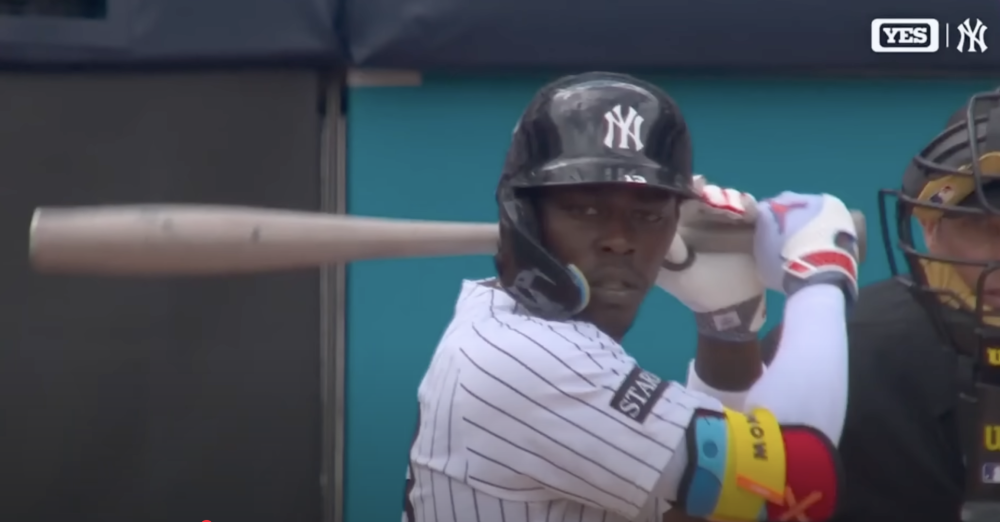On March 29, 2025, the New York Yankees made headlines not just for their explosive 20-9 victory over the Milwaukee Brewers, but for the peculiar new tool several players wielded during the game: the “torpedo” bat.
This innovative bat design, credited to an MIT physicist formerly on the Yankees’ payroll, has sparked intrigue, debate, and a flurry of home runs—nine in that single game, a franchise record.
As the dust settles from the Bronx Bombers’ historic opening weekend, where they tied an MLB record with 15 homers in their first three games, questions about the legality and impact of these bats have taken center stage.
Here’s what you need to know about the Yankees’ latest weapon and how it fits within Major League Baseball’s legal framework.
What Are Torpedo Bats?
The “torpedo” bat isn’t your typical piece of lumber. Unlike traditional baseball bats, which gradually widen from the handle to a broad barrel at the end, the torpedo model shifts the bulk of its mass closer to the hitter’s hands, near the label area. This creates a distinctive shape—often likened to a bowling pin—where the barrel is thicker and wider in a non-traditional spot.
The concept, pioneered by Aaron Leanhardt, a physicist with a Ph.D. from MIT who worked as a Yankees analyst in 2024 before joining the Miami Marlins, aims to optimize performance by aligning the bat’s sweet spot with where hitters most frequently make contact.
The idea emerged from detailed analytics, notably a study on shortstop Anthony Volpe. YES Network broadcaster Michael Kay explained during the March 29 broadcast that Volpe consistently hit balls on the label rather than the barrel of his old bat.
Leanhardt’s solution? Move more wood—and thus more mass—to that contact zone, increasing the likelihood of solid hits, or “barrels,” while reducing misses. Players like Volpe, Jazz Chisholm Jr., Cody Bellinger, Paul Goldschmidt, and Austin Wells have adopted the design, and the early results are staggering: all five homered in the nine-homer barrage against the Brewers.
-
- Shape and Size: The bat shall be a smooth, round stick not more than 2.61 inches in diameter at the thickest part and not more than 42 inches in length.
- Material: The bat shall be one piece of solid wood. NOTE: No laminated or experimental bats shall be used in a professional game (either championship season or exhibition games) until the manufacturer has secured approval from the Rules Committee of his design and methods of manufacture.
- Cupped Ends: An indentation in the end of the bat up to 1¼ inches in depth is permitted and may be no wider than two inches and no less than one inch in diameter. The indentation must be curved with no foreign substance added.
- Grip Substances: The bat handle, for not more than 18 inches from its end, may be covered or treated with any material or substance to improve the grip. Any such material or substance that extends past the 18- inch limitation shall cause the bat to be removed from the game.
The torpedo bat adheres to these parameters. Its diameter doesn’t exceed 2.61 inches, its length stays under 42 inches, and it’s crafted from solid wood—birch for Bellinger, as opposed to his usual maple, making it an ounce lighter. The key is its unconventional weight distribution, which Rule 3.02 doesn’t explicitly restrict. While the rule mentions “experimental” bats needing approval, the Yankees evidently secured this beforehand, as manager Aaron Boone and players like Bellinger emphasized that the design was vetted with MLB prior to use.
This isn’t the first time bat innovation has stirred debate. In 1983, George Brett’s infamous “Pine Tar Incident” against the Yankees saw a home run disallowed due to excessive grip substance, only for the call to be overturned later.


